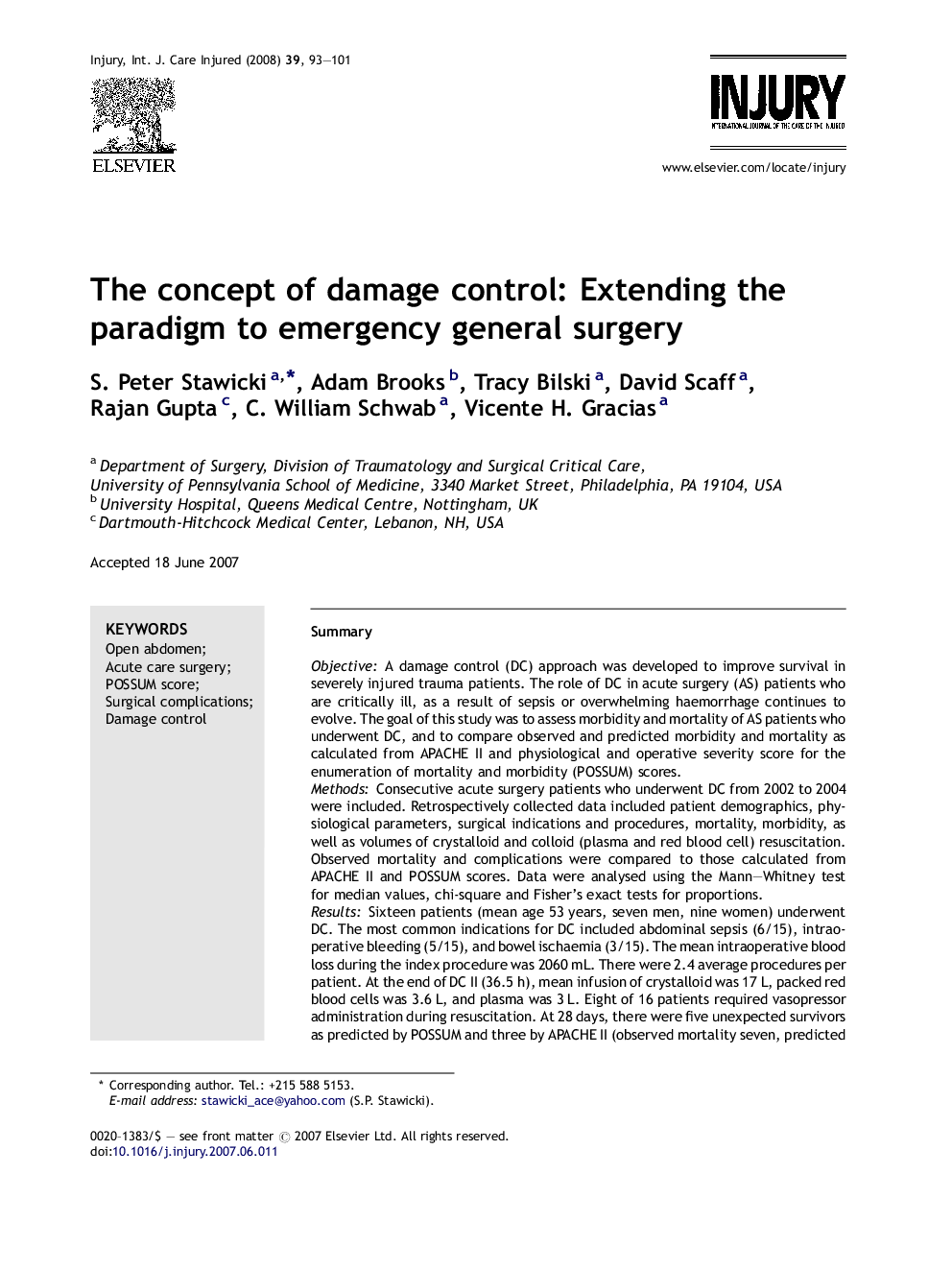| Article ID | Journal | Published Year | Pages | File Type |
|---|---|---|---|---|
| 3242240 | Injury | 2008 | 9 Pages |
SummaryObjectiveA damage control (DC) approach was developed to improve survival in severely injured trauma patients. The role of DC in acute surgery (AS) patients who are critically ill, as a result of sepsis or overwhelming haemorrhage continues to evolve. The goal of this study was to assess morbidity and mortality of AS patients who underwent DC, and to compare observed and predicted morbidity and mortality as calculated from APACHE II and physiological and operative severity score for the enumeration of mortality and morbidity (POSSUM) scores.MethodsConsecutive acute surgery patients who underwent DC from 2002 to 2004 were included. Retrospectively collected data included patient demographics, physiological parameters, surgical indications and procedures, mortality, morbidity, as well as volumes of crystalloid and colloid (plasma and red blood cell) resuscitation. Observed mortality and complications were compared to those calculated from APACHE II and POSSUM scores. Data were analysed using the Mann–Whitney test for median values, chi-square and Fisher's exact tests for proportions.ResultsSixteen patients (mean age 53 years, seven men, nine women) underwent DC. The most common indications for DC included abdominal sepsis (6/15), intraoperative bleeding (5/15), and bowel ischaemia (3/15). The mean intraoperative blood loss during the index procedure was 2060 mL. There were 2.4 average procedures per patient. At the end of DC II (36.5 h), mean infusion of crystalloid was 17 L, packed red blood cells was 3.6 L, and plasma was 3 L. Eight of 16 patients required vasopressor administration during resuscitation. At 28 days, there were five unexpected survivors as predicted by POSSUM and three by APACHE II (observed mortality seven, predicted mortality by the two methods: 12 (P = 0.074), and 10 (P = 0.24), respectively). Five patients died prior to definitive abdominal closure. Split thickness skin grafting (4/16) and primary fascial closure (4/16) constituted the most common methods of abdominal closure. Surgical morbidity predicted by POSSUM (98%) and actual morbidity (100%) were similar.ConclusionAlthough the morbidity and mortality of AS patients undergoing DC is high, the application of DC principles in this group may reduce mortality compared to that predicted by POSSUM or APACHE II. In order to adequately demonstrate this contention, large, multi-institutional studies of DC in AS patients need to be performed. The POSSUM score appears to accurately estimate the high morbidity in general surgery DC patients, and supports the importance of team management of these complex patients by acute care surgery specialists.
